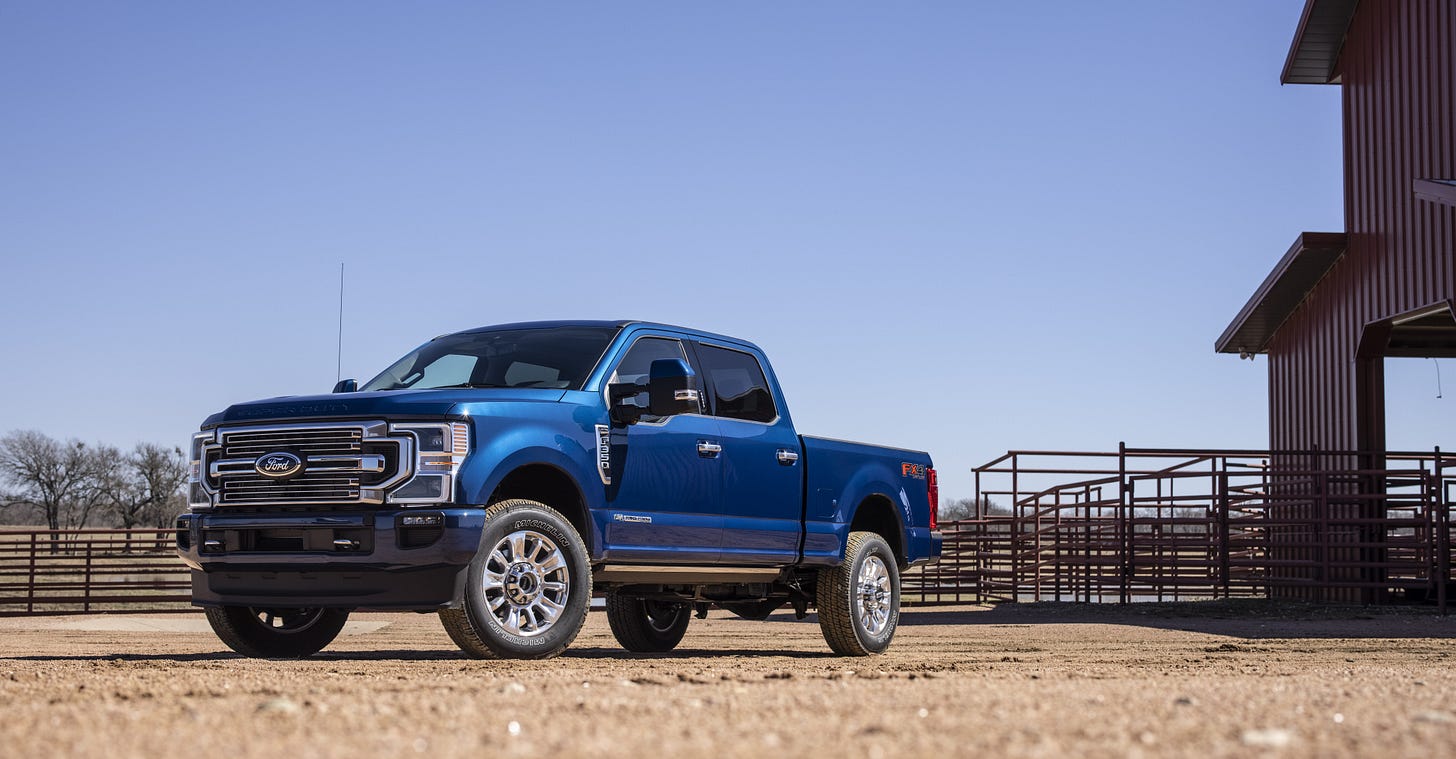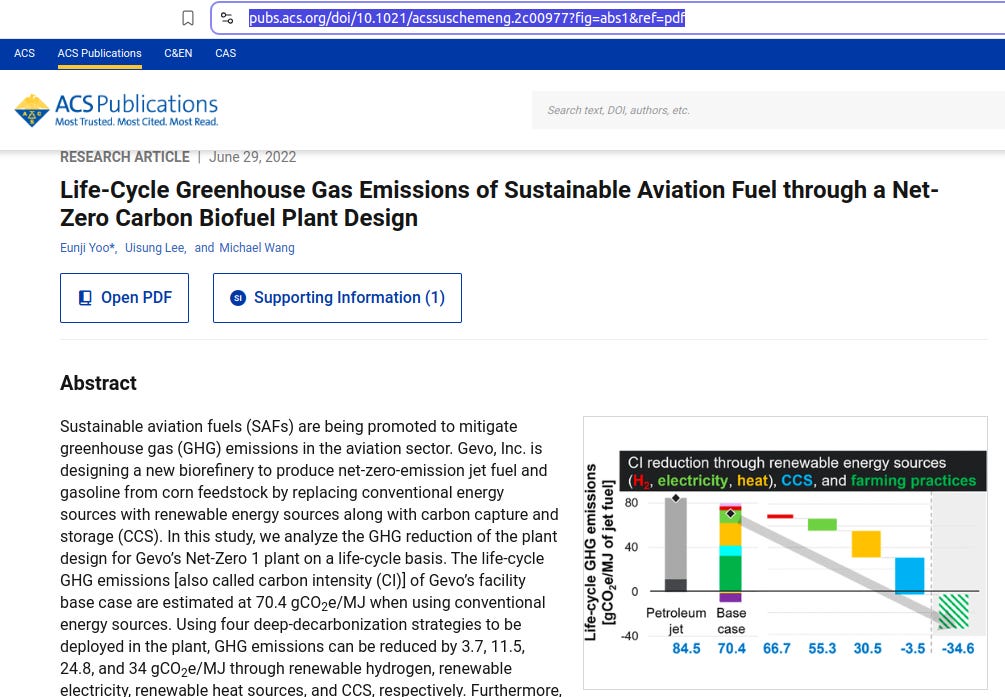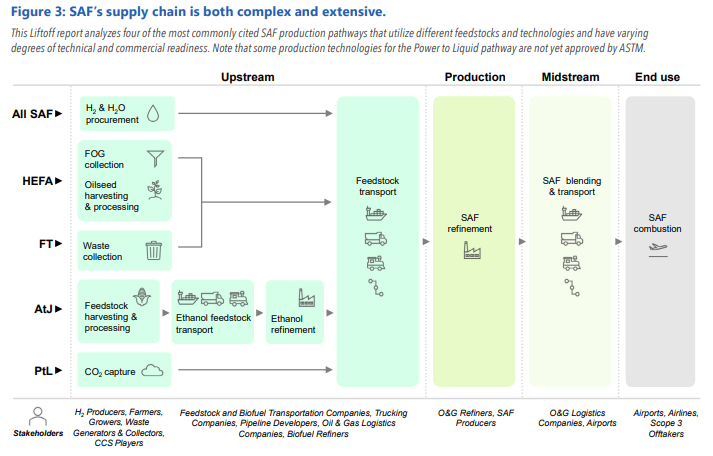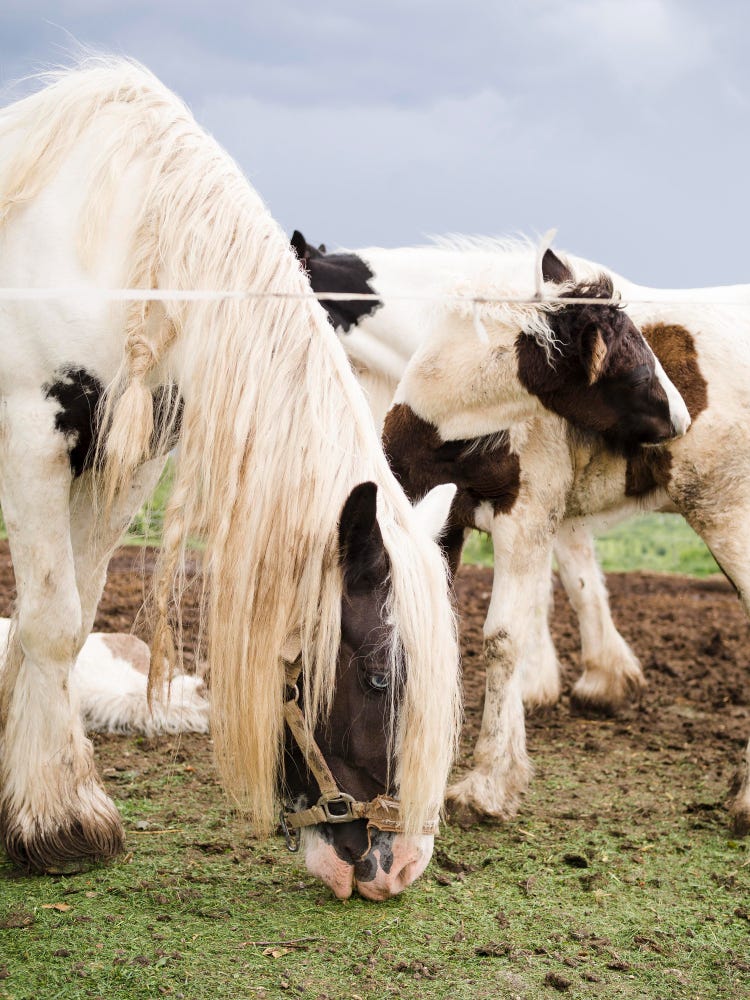Grasses are sustainable horse fuels
and their growth offsets horses' tailpipe emissions
Fury, a sturdy American quarter horse and I waited while cowboys Jake and Hunter were fixing the fence. Right across, one of Golden Diamonds’s F-350 trucks rolled by. “You know they won the Wakimis sustainability award?” Hunter asked. The Wakimis were a local branch of a nonprofit, mainly patronized by local business owners.
“No, I didn’t hear that,” Jake replied. “They don’t seem to be so sustainable if you’re asking me. They got a fleet of ten of those 350s and then there’s all that tourist stuff going on over there.”
“Doesn’t matter,” Hunter answered, “they got the award because they use sustainable fuel to power their equipment.”
“Really!?” Jake said, filled with bewilderment and added: “As far as I can see, the tailpipes of their 350s produce as much off-gas as ours do.” As he said this, a private jet thundered past over our heads. Jake added: “and I bet them there are more ‘sustainable’ than us too,” while pointing at the plane and adding air-quotes.

Jake was right. What he didn’t know, is that there had recently been a renewed push by several authorities to switch fuel consumption to bio-based alternatives, above all so in aviation. For instance, last October, the California Air Resources Board closed a deal with major air carriers to increase the share of “sustainable aviation fuel” (SAF) in their fuel consumption tenfold by 2035. California’s initiative ties into the White House’s Net Zero plans announced back in 2021, which targets to reduce emissions from the airline industry by 20%. Recently too, the Australian Renewable Energy Agency (ARENA) announced a AUD 14.1 million investment into two biofuel based SAF initiatives, with the aim to “accomplish a reduction in aviation sector emissions.”
While it is a noble goal to work towards a more ecologically friendly aviation industry, the path governments have set off on to get there, raises questions. Unless research, military or civil, delivers antigravity devices in the near future, there is no path to establish an emission-free aviation industry. Battery powered planes may be feasible for short-haul flights with a limited amount of passengers, but as it stands there is no economically viable route for electric flight to replace transcontinental air travel in wide-bodied airliners. We must therefore assume that, for the foreseeable future, airlines will predominantly be operating planes powered by internal combustion engines, that entail a trail of emissions, quite literally so.

How exactly, then, do governments plan to reduce emissions? In official statements, there is no intention to reduce the number of flights, so the one lever remaining resides in the fuel used to power the planes. That is where sustainable aviation fuels enter the scene, that according to some sources can drastically reduce the aviation industry’s emission footprint, or even eliminate it. Estimates of how much of a reduction can be achieved vary, but airplane manufacturer Airbus uses the “conservative” number of 80% , whereas the US Department of Energy lands at 94% and some scientific publications think that SAFs could be a net carbon sink. Note that that implies a reduction in excess of a hundred percent. One can’t help but wonder, though, how such a massive reduction in emissions can realistically be achieved, given the fact planes are still propelled by combustion. To assess that, we need to dive into what sustainable aviation fuels are composed of.

The term “sustainable aviation fuels” can refer to a bucket of fuels generated by different technologies. Some of those technologies truly have potential. For instance, the power-to-liquids (PtL) pathway consists of using electrical power to generate hydrogen by hydrolyzing water. Carbon is supplied by capturing carbon dioxide from the air and synthetic hydrocarbons are then produced by combining both in a Fischer-Tropsch synthesis reaction. However, large-scale PtL manufacturing would consume huge amounts of electrical power, which cannot be delivered economically unless we invest in reliable, energy-dense, on-shore power generation. While that would be desirable, governments today are making little effort to that goal and instead are subsidizing unreliable, energy sparse technologies with disastrous environmental cost, such as wind power. In today’s energy landscape, therefore, truly sustainable aviation fuels that physically sequester carbon from the air remain a far-off scenario. Ergo, we need to distinguish between sustainable aviation fuels that only exist on the drawing board or in the chemical laboratory from those that can be manufactured at scale today.

Sustainable aviation fuels available in today’s market almost exclusively resort under the umbrella of biofuels. Different feedstocks, as well as different manufacturing technologies, can be used. For instance, one can start from vegetable oils and decompose those into fatty esters (a process long known in the cosmetics industry), which can then undergo a few further chemical processing steps before being converted into biodiesel and/or SAF. Alternatively, high fructose corn syrup could be used as a raw material, which is then converted into bio-ethanol, which on its turn can be oligomerized and dehydrated into the longer chain hydrocarbon molecules that constitute diesel or jet fuel.
While all of the above attests to the technical feasibility of manufacturing diesel-like blends from bio-based feedstocks, it still remains very much unclear how doing so can lead to a reduction in carbon emissions when compared to traditional fuels. At first, let’s start from the fact that agriculture is needed to produce the raw materials. In other contexts, we are being lectured about the detrimental impact of agriculture on climate change, with nonprofits and governments rewarding farmers for closing their operations and “rewilding” their land. For instance, hundreds of Dutch farmers were essentially forced to close and accept a government buyout, such that the country could meet its committed “reduction in emissions.” In the case of bio-fuels, though, we claim to produce a “sustainable” fuel that is based on agricultural produce. However, that is not where its carbon footprint ends. The agricultiral produce needs to undergo transport and several steps of mechanical, chemical and/or biological fermentation processes.
Accounting for all these manufacturing steps, one would assume that “sustainable” aviation fuels end up more burthensome for the environment than crude oil based Jet A1. Likewise, the closely related biodiesel can be expected to generate more emissions than fossil fuel based diesel. A 2022 Reuters article arrived at that conclusion, but was retracted following a backlash from the green lobby.
(If you don’t want Wild Horse Wisdom to be retracted by the green lobby, please consider to subscribe)
So how can “sustainable” aviation fuels land in the bucket of climate friendly solutions? Virtually every source, even the ones that promote SAFs, will admit that SAFs and biodoesels generate the same amount of tailpipe emissions as their classical counterparts do. Moreover, the carbon generated during their manufacturing process is acknowledged for in most sources. So how do they all end up concluding that SAFs lead to a massive reduction in emissions? The answer is simple: because they all advocate that not only emissions from the manufacturing and product use should be accounted for, but all lifecycle emissions. Lifecycle emissions include the phase in which the plants that will later end up being feedstock grow, and as they grow they obviously sequester carbon. Many publications assess different scenarios, wherein accounting for the carbon sequestered by the plants in a context of today’s farming and manufacturing practices already leads to a significant reduction in emissions, but in a scenario of green, regenerative farming, the carbon sequestered in the growing process could offset all carbon emitted in the lifecycle of SAFs, including them being burnt in transcontinental flight.

It would be an interesting study to dive deeper into how these publications get to their conclusions. However, at this point let’s assume that they are ballpark correct and that the process of growing plants does indeed lead to a massive reduction in lifecycle emissions. If so, then I can’t help but make the following observation: if the process of growing plants is capable of offsetting the emissions from agriculture, followed by biofuel manufacturing and combustion of the fuels produced, it by definition is capable of offsetting the emissions from the agricultural process alone. Moreover, if the carbon sequestered in the growing process can offset the emissions from the tailpipes of transcontinental jetliners, shouldn’t it also be able to offset tailpipe emissions from cows and sheep? If accounting standards for biofuels are correct, then the carbon sequestered while growing plants for animal feed definitely offsets the greenhouse gases emitted by animals, even when contained in continuous animal feeding operations (CAFOs). So why exactly are we seeing measures around the globe to reduce livestock, such as a tax on cow farts in Denmark, the government effectively all but closing dairy farms in the Netherlands? Likewise, why are private companies hailed for buying up citrus plantations and taking them out of the food chain by turning them into pongamia groves that produce nothing of any use? The answer, of course, are “environmental, social and governance” (ESG) accounting standards, which allow to account for farming as a carbon credit if the use of the products is favored, whereas it does not allow to do so if the product is disliked.
Livestock farming is not only under pressure from environmental groups because of emissions. Often the argument is raised that “we steal poor African farmers of their food by making them grow animal feed so we can have a burger,” or “we are chopping down rainforest so we can grow soy to feed animals.” I can’t help but notice that, while partially true, we are doing exactly the same to produce biofuels, and I do not see a media outcry over the latter. In fact, the debate on “food versus fuel” surrounding biofuels appeared to have been won by the “food” argument in the early 2010s, which makes it very odd to see these same biofuels resurface as a cure to emissions from airplanes in the 2020s. In fact, in that discussion, “food” should always win, since, even if there truly is an emergency, we all need food to survive and the food supply chain should be the absolute last sector affected to mitigate any kind of emergency.

The discussion on sustainability of farming can only go in two directions: either animal burps are devastating the planet, but if so, then sustainable aviation fuels are nothing more than the most egregious attempt at greenwashing to make billionaires feel good about them “sustainably” flying around the planet in private jets. Or alternatively, agriculture can truly offset emissions from ensuing combustion in aviation, but then that inevitably leads to the conclusion that livestock farming is inherently sequestering carbon, so we should actually set up livestock operations to save the planet. Even more so, in that case, we should consider removing solar farms that do not allow plants to grow underneath and replace them with animal feed production.
I would advocate for the latter. Hundreds of thousands of bison once roamed North America and somehow they did not cause a climate catastrophe. That is because nature does not design systems that cannot balance without human intervention. Grazing is an inherently fully sustainable and renewable process: growing grass (and supplemental feed) sequesters carbon, while cattle produce manure that re-fertilizes the soil and balances the soil microbiome.
Cowboy Jake is right, Golden Diamonds may be running their F350s on sustainable truck fuels, but they produce the same offgas as ours do. And the grass, hay and vegetables we grow completely offset our emissions. I’m quite sure that that includes our horse farts. Good to know that we can keep ploughing on as before without compunctions!
(I hope you appreciated this post. If so, please click the “like” button).

